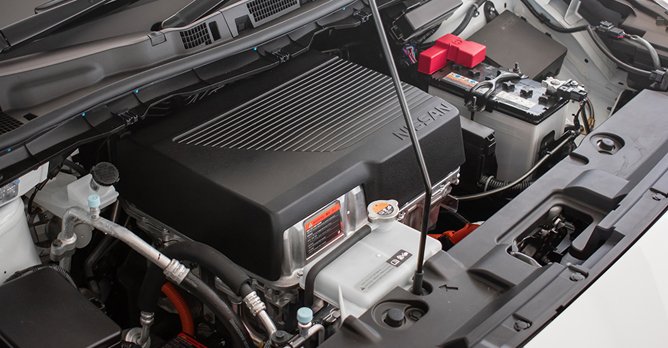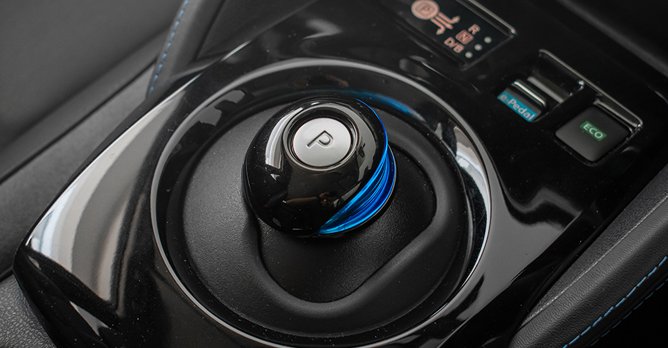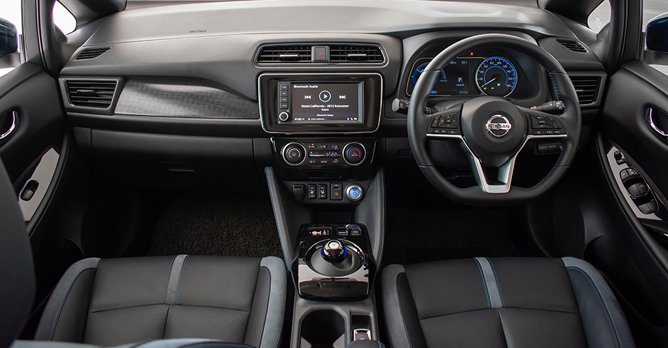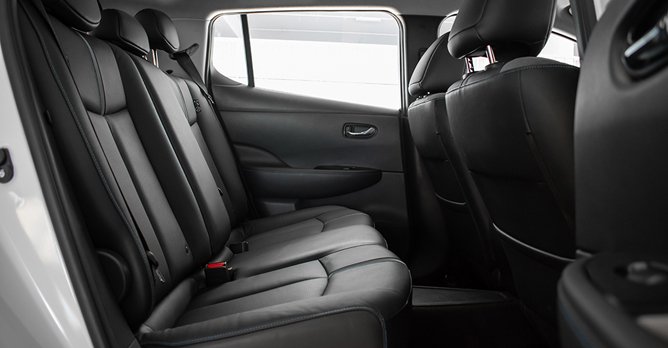Nissan Leaf Electric 150PS (A) Review
30 May 2019|20,457 views
What We Like
Generous amount of power and torque
Handles like a sporty hatch
Decent range of 250-260km
Funky design
Great cargo space of 435 litres
What We Dislike
Lump in second row
CHAdeMO system
It's a $160,300 Nissan hatchback that you can't fast-charge in public for now
If you lived in Europe, you'd probably have seen one of these at every turn. The Nissan Leaf is the best-selling EV there, with more than 18,000 new units registered between January and June of 2018 alone.
And globally, the Japanese manufacturer has already sold more than 400,000 units since the model's inception. The one you see here is the second iteration, but the first to be made available for cutomers in Singapore.
There were actually 25 of the first generation ones registered in Singapore, but all were test bed cars.
So what can we expect from this second coming?
Key improvements the second generation Leaf boasts include a new 110kw (148bhp) electric motor producing 320Nm of instant torque (up from 80kW and 254Nm), and a new 40kWh battery (up from 30kWh).
These allow it to go almost twice as far as its predecessor, now 270km under Europe's new WLTP emissions and economy standard.
Our drive began with a full charge and 260km of range displayed. But after 60km of jaunting around the island, there was still slightly more than 200km of range left to travel.
This means that it offers more range than the Hyundai Ioniq Electric, on top of more power and torque. Even in the more sedated Eco driving mode, acceleration is brisk and its power is dished out very smoothly.
On one occasion, I had to overtake a souped-up Volkswagen Golf GTI from the lights in order to make it to a slip road and the Leaf impressively managed to do so without breaking a sweat.
You can also drive it using only the accelerator pedal in E-pedal mode, which initiates strong regenerative braking when you lift off, to the point where you can almost stop the car without touching the brakes.
And globally, the Japanese manufacturer has already sold more than 400,000 units since the model's inception. The one you see here is the second iteration, but the first to be made available for cutomers in Singapore.
There were actually 25 of the first generation ones registered in Singapore, but all were test bed cars.
So what can we expect from this second coming?
Key improvements the second generation Leaf boasts include a new 110kw (148bhp) electric motor producing 320Nm of instant torque (up from 80kW and 254Nm), and a new 40kWh battery (up from 30kWh).
These allow it to go almost twice as far as its predecessor, now 270km under Europe's new WLTP emissions and economy standard.
Our drive began with a full charge and 260km of range displayed. But after 60km of jaunting around the island, there was still slightly more than 200km of range left to travel.
This means that it offers more range than the Hyundai Ioniq Electric, on top of more power and torque. Even in the more sedated Eco driving mode, acceleration is brisk and its power is dished out very smoothly.
On one occasion, I had to overtake a souped-up Volkswagen Golf GTI from the lights in order to make it to a slip road and the Leaf impressively managed to do so without breaking a sweat.
You can also drive it using only the accelerator pedal in E-pedal mode, which initiates strong regenerative braking when you lift off, to the point where you can almost stop the car without touching the brakes.
This admittedly, will take a few minutes of driving around to get used to.
And like all electric cars with batteries mounted across the floor, it also handles neatly around corners like a sporty hatchback although feedback is a little lacking.
Dollars and sense
The added zippiness, however, does come at a cost of $160,300 (as of 28 May 2019), which is $18,301 more than the Hyundai.
Addtionally, it commands higher annual road tax of $1,494 a year, versus the Ioniq Electric's $1,082.
It also has slightly less usable space in the second row (although leg and shoulder room is abundant) given the little hump in the floor, which Nissan says is in place for added structural rigidity.
But it does come with added goodies such as larger 17-inch wheels, Nissan's Intelligent Emergency Braking, Intelligent Around View Monitor, a Driver Attention Alert system and a much larger 435-litre boot.
Its main niggle is perhaps the fact that Nissan's fast charging system uses a CHAdeMO connector, which will only be available at Nissan showrooms later this year.
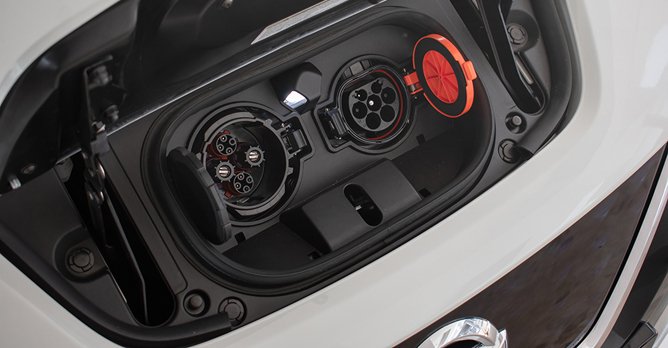
 The Leaf's Achilles' heel is the CHAdeMO charging connector it employs, which currently limits fast charging to Nissan showrooms
The Leaf's Achilles' heel is the CHAdeMO charging connector it employs, which currently limits fast charging to Nissan showrooms
SP Group's public DC chargers, and most of the EVs here, use the Combined Charging System Type 2 plug. For now, Leaf buyers will just have to stick to regular charging that will take at least five hours.
And like all electric cars with batteries mounted across the floor, it also handles neatly around corners like a sporty hatchback although feedback is a little lacking.
Dollars and sense
The added zippiness, however, does come at a cost of $160,300 (as of 28 May 2019), which is $18,301 more than the Hyundai.
Addtionally, it commands higher annual road tax of $1,494 a year, versus the Ioniq Electric's $1,082.
It also has slightly less usable space in the second row (although leg and shoulder room is abundant) given the little hump in the floor, which Nissan says is in place for added structural rigidity.
But it does come with added goodies such as larger 17-inch wheels, Nissan's Intelligent Emergency Braking, Intelligent Around View Monitor, a Driver Attention Alert system and a much larger 435-litre boot.
Its main niggle is perhaps the fact that Nissan's fast charging system uses a CHAdeMO connector, which will only be available at Nissan showrooms later this year.

SP Group's public DC chargers, and most of the EVs here, use the Combined Charging System Type 2 plug. For now, Leaf buyers will just have to stick to regular charging that will take at least five hours.
What We Like
Generous amount of power and torque
Handles like a sporty hatch
Decent range of 250-260km
Funky design
Great cargo space of 435 litres
What We Dislike
Lump in second row
CHAdeMO system
It's a $160,300 Nissan hatchback that you can't fast-charge in public for now
If you lived in Europe, you'd probably have seen one of these at every turn. The Nissan Leaf is the best-selling EV there, with more than 18,000 new units registered between January and June of 2018 alone.
And globally, the Japanese manufacturer has already sold more than 400,000 units since the model's inception. The one you see here is the second iteration, but the first to be made available for cutomers in Singapore.
There were actually 25 of the first generation ones registered in Singapore, but all were test bed cars.
So what can we expect from this second coming?
Key improvements the second generation Leaf boasts include a new 110kw (148bhp) electric motor producing 320Nm of instant torque (up from 80kW and 254Nm), and a new 40kWh battery (up from 30kWh).
These allow it to go almost twice as far as its predecessor, now 270km under Europe's new WLTP emissions and economy standard.
Our drive began with a full charge and 260km of range displayed. But after 60km of jaunting around the island, there was still slightly more than 200km of range left to travel.
This means that it offers more range than the Hyundai Ioniq Electric, on top of more power and torque. Even in the more sedated Eco driving mode, acceleration is brisk and its power is dished out very smoothly.
On one occasion, I had to overtake a souped-up Volkswagen Golf GTI from the lights in order to make it to a slip road and the Leaf impressively managed to do so without breaking a sweat.
You can also drive it using only the accelerator pedal in E-pedal mode, which initiates strong regenerative braking when you lift off, to the point where you can almost stop the car without touching the brakes.
And globally, the Japanese manufacturer has already sold more than 400,000 units since the model's inception. The one you see here is the second iteration, but the first to be made available for cutomers in Singapore.
There were actually 25 of the first generation ones registered in Singapore, but all were test bed cars.
So what can we expect from this second coming?
Key improvements the second generation Leaf boasts include a new 110kw (148bhp) electric motor producing 320Nm of instant torque (up from 80kW and 254Nm), and a new 40kWh battery (up from 30kWh).
These allow it to go almost twice as far as its predecessor, now 270km under Europe's new WLTP emissions and economy standard.
Our drive began with a full charge and 260km of range displayed. But after 60km of jaunting around the island, there was still slightly more than 200km of range left to travel.
This means that it offers more range than the Hyundai Ioniq Electric, on top of more power and torque. Even in the more sedated Eco driving mode, acceleration is brisk and its power is dished out very smoothly.
On one occasion, I had to overtake a souped-up Volkswagen Golf GTI from the lights in order to make it to a slip road and the Leaf impressively managed to do so without breaking a sweat.
You can also drive it using only the accelerator pedal in E-pedal mode, which initiates strong regenerative braking when you lift off, to the point where you can almost stop the car without touching the brakes.
This admittedly, will take a few minutes of driving around to get used to.
And like all electric cars with batteries mounted across the floor, it also handles neatly around corners like a sporty hatchback although feedback is a little lacking.
Dollars and sense
The added zippiness, however, does come at a cost of $160,300 (as of 28 May 2019), which is $18,301 more than the Hyundai.
Addtionally, it commands higher annual road tax of $1,494 a year, versus the Ioniq Electric's $1,082.
It also has slightly less usable space in the second row (although leg and shoulder room is abundant) given the little hump in the floor, which Nissan says is in place for added structural rigidity.
But it does come with added goodies such as larger 17-inch wheels, Nissan's Intelligent Emergency Braking, Intelligent Around View Monitor, a Driver Attention Alert system and a much larger 435-litre boot.
Its main niggle is perhaps the fact that Nissan's fast charging system uses a CHAdeMO connector, which will only be available at Nissan showrooms later this year.
SP Group's public DC chargers, and most of the EVs here, use the Combined Charging System Type 2 plug. For now, Leaf buyers will just have to stick to regular charging that will take at least five hours.
And like all electric cars with batteries mounted across the floor, it also handles neatly around corners like a sporty hatchback although feedback is a little lacking.
Dollars and sense
The added zippiness, however, does come at a cost of $160,300 (as of 28 May 2019), which is $18,301 more than the Hyundai.
Addtionally, it commands higher annual road tax of $1,494 a year, versus the Ioniq Electric's $1,082.
It also has slightly less usable space in the second row (although leg and shoulder room is abundant) given the little hump in the floor, which Nissan says is in place for added structural rigidity.
But it does come with added goodies such as larger 17-inch wheels, Nissan's Intelligent Emergency Braking, Intelligent Around View Monitor, a Driver Attention Alert system and a much larger 435-litre boot.
Its main niggle is perhaps the fact that Nissan's fast charging system uses a CHAdeMO connector, which will only be available at Nissan showrooms later this year.
SP Group's public DC chargers, and most of the EVs here, use the Combined Charging System Type 2 plug. For now, Leaf buyers will just have to stick to regular charging that will take at least five hours.
Car Information
Nissan Leaf Electric 40 kWh (A)
CAT A|Electric|5.8km/kWh
Horsepower
110kW (148 bhp)
Torque
320 Nm
Acceleration
8.4sec (0-100km /hr)
This model is no longer being sold by local distributor
All Used Nissan Leaf ElectricThank You For Your Subscription.


























